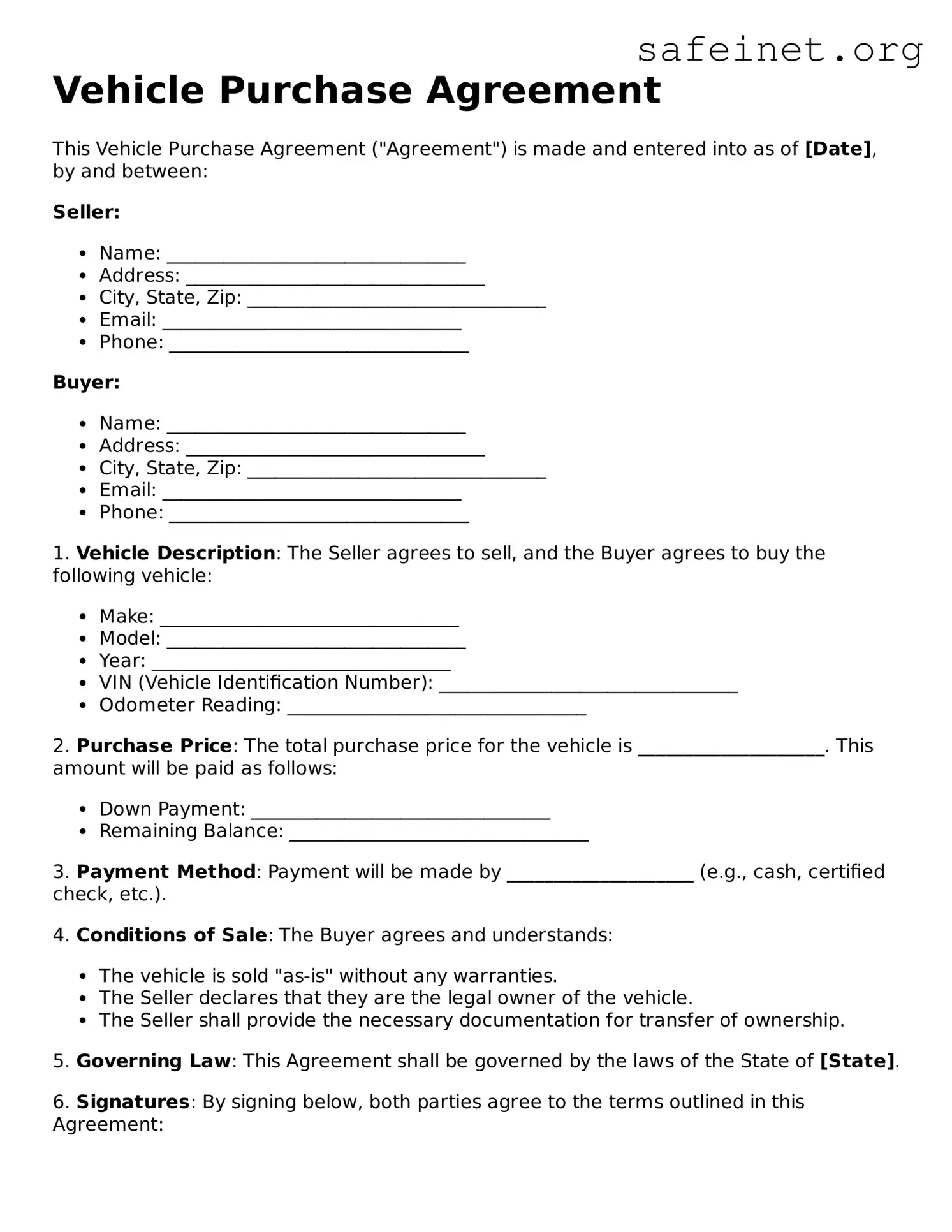What is a Vehicle Purchase Agreement?
A Vehicle Purchase Agreement is a legally binding document that outlines the terms and conditions under which a vehicle is sold. It typically includes details such as the buyer's and seller's names, vehicle identification number (VIN), purchase price, payment terms, and any warranties or representations made by the seller regarding the condition of the vehicle.
Why is a Vehicle Purchase Agreement important?
This agreement serves to protect both the buyer and the seller by clearly defining the expectations and responsibilities of each party. It helps prevent misunderstandings by specifying the condition of the vehicle, the agreed-upon price, and any obligations related to the sale. In case of disputes, having a written record can provide critical evidence to support each party’s claims.
What information should be included in a Vehicle Purchase Agreement?
A comprehensive Vehicle Purchase Agreement should include the following information: the full names and addresses of the buyer and seller, the make, model, year, and VIN of the vehicle, the total purchase price, any trade-in vehicle details, payment method (e.g., cash, financing), and the date of the sale. Additional provisions could address warranties, liabilities, and whether the vehicle is being sold "as-is."
Can I use a Vehicle Purchase Agreement for any type of vehicle?
Yes, a Vehicle Purchase Agreement can be used for all types of motor vehicles, including cars, trucks, motorcycles, and recreational vehicles (RVs). Regardless of the vehicle type, having the agreement documented can ensure a smooth transaction process.
What happens if the buyer fails to make payments as outlined in the Vehicle Purchase Agreement?
If the buyer fails to make payments, the seller may have the right to take legal action based on the terms laid out in the agreement. The specific remedies available to the seller, such as repossession of the vehicle or seeking damages, depend on the agreed-upon payment terms and local laws. Clear communication between both parties is essential to resolve such issues amicably.
Is it necessary to have a Vehicle Purchase Agreement notarized?
While notarization is not typically required for a Vehicle Purchase Agreement to be valid, it may enhance the document's credibility. Notarizing the agreement provides an added layer of protection, demonstrating that both parties willingly signed the document under oath. This can be particularly useful if disputes arise later.
What should I do if I am unsure about the terms in the Vehicle Purchase Agreement?
If any terms in the Vehicle Purchase Agreement are unclear or require further explanation, it is crucial to seek clarification from the other party involved. Additionally, consulting a legal professional can help ensure that all aspects of the agreement are understood and that your rights and interests are protected before signing.
